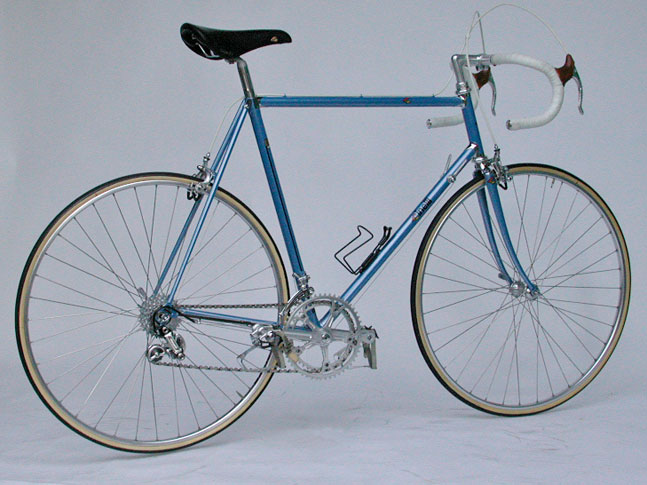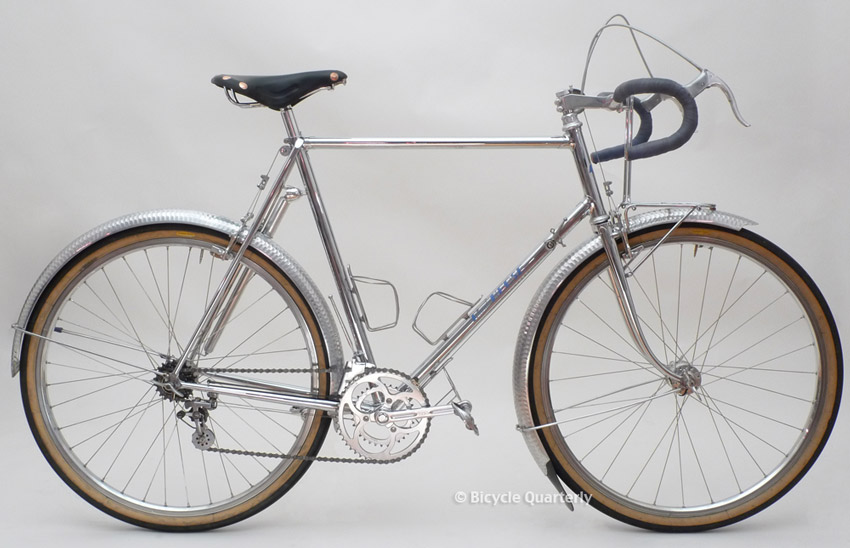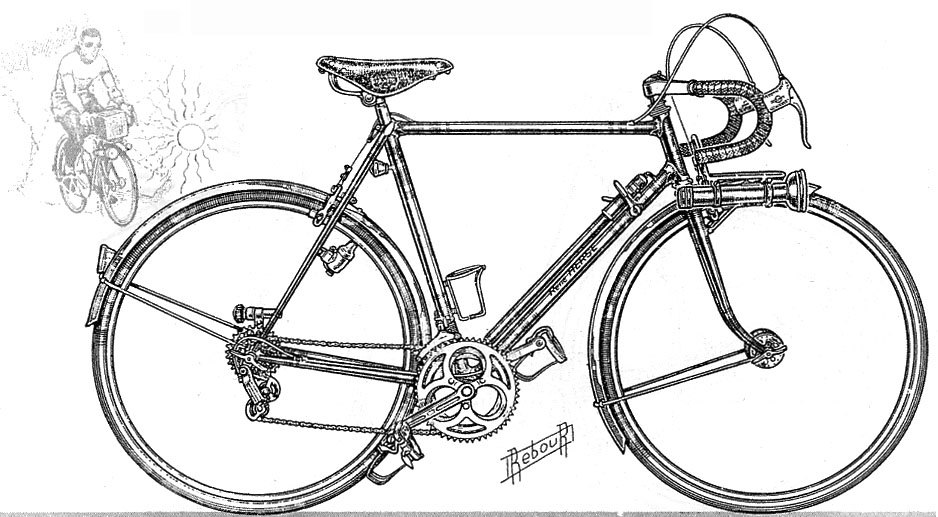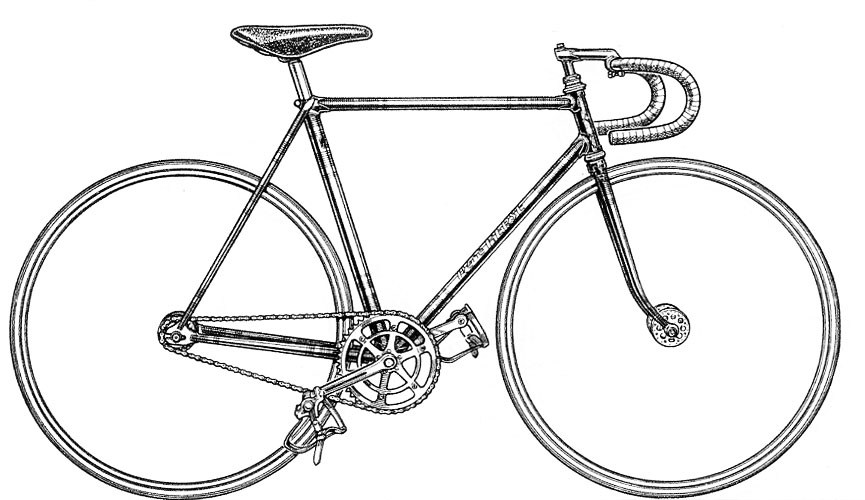Aesthetic Choices

The bike above is the icon of my youth – a 1980s Cinelli Supercorsa with Campagnolo Super Record components. Back then, I was riding a crummy Peugeot 10-speed with heavy tires, rattling fenders and poorly-shifting derailleurs, and I dreamt of a lithe racing bike.
When I finally was able to afford one (a Bianchi, since Cinellis were out of reach), I loved the fender-less wheels, the narrow tires, and the almost ethereal appearance of my bike. I promised myself that I’d never ride a bike with fenders again.

A few decades later, my preferences have changed. To my youthful eyes, my current bike would have seemed bulky and unappealing. The big tires, the wide fenders, the racks, the lights… It is a lot of bike, and it wouldn’t have squared with my vision of the ultimate performance bike. Most of all, I would have thought that the randonneur bike offered less performance than the racing machine.
Today, we know that both bikes perform equally well. We now know that wider tires don’t roll slower than narrower ones, provided they use the same supple casing. Physics tells us that the weight of fenders and lights has only an insignificant effect on climbing performance, and our on-the-road testing has confirmed this.
For me, the randonneur bike, with its lighter-gauge frame tubing, actually climbs better than the Cinelli with its heavier frame. The Cinelli is geared more toward a strong sprinter, and I am more of a climber and long-distance rider. But a racing bike could be built with a lighter-weight frame that would perform like my randonneur bike, so that isn’t a good reason to prefer one over the other.
It’s also churlish to chastise a rider on a sunny day for not having fenders, or to look down upon a weekend rider who may never ride all the way through the night, but prefers to ride a fully-equipped randonneur bike.

In the end, it comes down to aesthetic choices. I have grown to love the look of a good randonneur bike. The fenders serve to accentuate the wheels, the small rack makes the entire bike look as if it is moving forward, and the lights add interest to the bike. To me, a racing bike now almost looks incomplete, as if the builder had not yet finished his or her task.

Even so, I fully understand the appeal of a great racing bike, whether modern or classic. The track bike is the ultimate expression of that aesthetic – it’s the bike reduced to its simplest form. The racing bike then adds only the parts that are absolutely necessary: brakes and derailleurs. The tires are only as wide as need be. It’s a minimalist aesthetic that contrasts sharply with the randonneur bike’s “fully equipped with everything in its place” look.
Whichever we prefer, it’s useful to realize that we are making aesthetic choices. There’s no need to defend one preference over another because of its imagined performance advantages. (It’s different if you are actually racing, or riding in wet weather, or at night. In that case, the machine that is specific for your activity is the best choice.)
Some people scoff at aesthetic choices as being superficial, but I consider them very important. Few of us sit on upturned fruit crates in our homes – and just like our furniture, our bikes are important for our enjoyment of our daily lives. And like our clothes, our bikes present ourselves to the world. Let’s be proud of our aesthetic choices while respecting those of others.
Photo credit: speedbikes.com (Cinelli)


